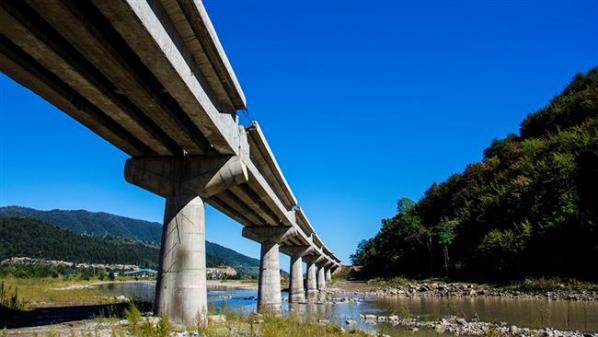Iran completes ‘beauty link’ in North-South trade corridor
Iran completes ‘beauty link’ in North-South trade corridor
 |
Iran is preparing to launch what could be the most beautiful railway in the country at the heart of an intercontinental multimodal transport project.
A 205-kilometer railway from Qazvin to Rasht in northern Iran is nearing completion and could be among the last parts of a rail link through which Russia would send its goods to Mumbai, India, Including Iran.
A report by the Iranian news agency IRNA said the railway could increase the number of tourists visiting Gilan province in northern Iran.
Situated on the shores of the Caspian Sea, Gilan is a popular destination for Iranian travelers – especially during the summer holidays and the New Year. Official figures show that it welcomes more than 30 million visitors each year.
The construction of the Qazvin-Rasht railway is already considered one of the most difficult rail projects in Iran given the wide variety of terrain. An important part of the challenge was to dig 25 kilometers of tunnels and build about 8 kilometers of bridges.
In Gilan, it was necessary to take him to the jungles and over the rice fields and rivers to minimize the damage to the environment.
An extension to the northern port city of Bandar Anzali would lead passengers to the shores of the Caspian and would also offer a return trip inland for cargo destined for domestic markets or Mumbai through the port of the Persian Gulf of Bandar Abbas. Another extension of Rasht would go to Astara in Azerbaijan.
Previously, Abbas Akhoundi, Iranian Minister of Roads and Urban Development, said the Qazvin-Rasht rail link would be ready by the end of the summer.
The North-South International Transport Corridor (NSTC), a multi-model road linking India and the Middle East to the Caucasus, Central Asia, and Europe, is encouraged to significantly reduce costs and travel time and Stimulate trade.
The route of the ship, the road, and the railway connects Mumbai from India to the Iranian port of Bander Abbas and Baku in Azerbaijan as well as Astrakhan, Moscow and St. Petersburg in Russia before extending to the Northern Europe and Scandinavia.
